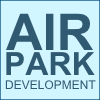 By Staff
By Staff
July 21, 2015
BURLINGTON, ON
The following is as dry as toast.
You have to be a bear for punishment to read through it all.
We have highlighted what we think is really relevant in bold
What you are about to read is the publication of changes the federal government wants to be made applicable to WORDS
The federal government recently released a draft of new rules and regulations that will apply to air parks and aerodromes once the public comment period has ended.
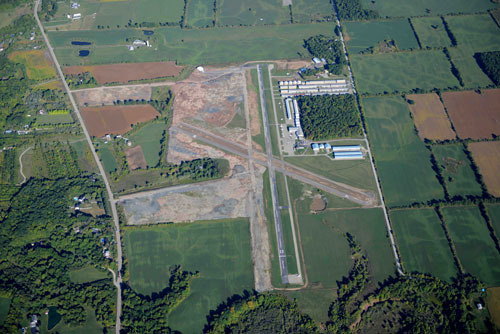
The photograph is dated – the runway cutting across the north south has been upgraded considerably and the land leveled for planned development. No one other than the imagination of Air Park president Vince Rossi knew what the plans were – and they kept changing.
These proposed Regulations would address the current identified gap in regulatory requirements by ensuring that there is a consistently applied notification process in advance of aerodrome work. This proposed amendment introduces clarity, predictability and increased communication for all stakeholders. The proposed Regulations are expected to provide an overall benefit to Canadians directly impacted by aerodrome work as the Regulations would compel proponents to engage stakeholders and solicit and mitigate their concerns in advance of construction. Industry will experience greater planning and cost certainty. A consequential benefit is an increase in coordinated land use between proponents and land use authorities.
These new rules will impact the ongoing legal battle between the city and the Burlington Air Park that has been in the court for close to three years.
Operators wishing to develop a new aerodrome or to significantly modify an existing aerodrome, whether it is certified or not, are not currently required to conduct consultations with affected stakeholders. Matters integral to aviation fall under federal jurisdiction, including aerodromes. However, the federal authority, unlike municipal and provincial authorities that have consultation processes in place for significant changes to land use likely to have an impact on the community, does not have a public engagement requirement to identify and mitigate stakeholder concerns in advance of aerodrome development.
The municipal and provincial stakeholders do not necessarily have to be consulted prior to the development of a non-certified aerodrome within their own jurisdiction. As a result, the lack of coordinated development planning can lead, for example, to inefficient land use and increased complaints from local constituents due to the impact of unexpected development.
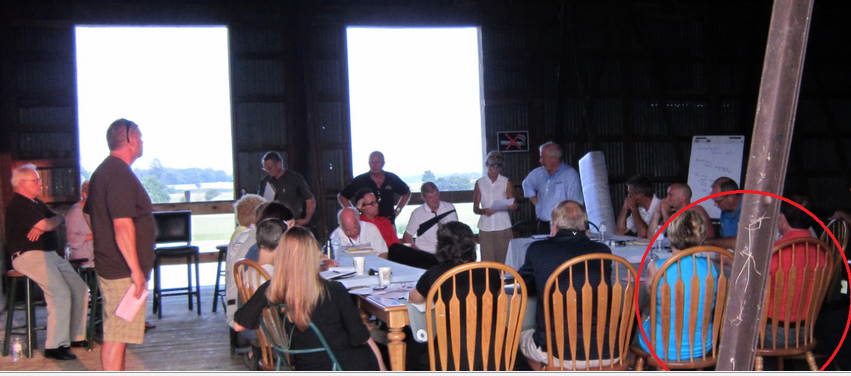
Vince Rossi, in the red sweater on the right sits next to ward 6 Councillor Blair Lancaster at the only community Rossi attended. His comment to the many requests made at the time was that he would “take them under advisement”.
Operators and stakeholders seeking aerodrome certification are required to have a consultation process but do not have a federal standard to guide them on what constitutes meaningful consultation. The implications for industry and other stakeholders include inconsistent approaches to consultation, insufficient information shared with affected stakeholders, and costs and delays for proponents or operators who, upon completing what they deem to have been an appropriate level of stakeholder engagement, find themselves caught in legal disputes over the validity of their process instead of commencing with their development.

Burlington city manager at the time, Jeff Fielding, taking a strip off Glenn Grenier, who was advocating for the Air Park corporation at a city Council meeting. City lawyers stand aside at the right.
The Government of Canada has exclusive jurisdiction over aeronautics in Canada and has established a legal framework through the Aeronautics Act (the Act) and the Canadian Aviation Regulations (CARs) that sets out robust safety requirements for the civil aviation industry. There are approximately 2 000 registered aerodromes, of which 547 are certified, and there are an estimated 5 000 unregistered aerodromes.
It is understood and recognized that aerodromes are engines for nearby communities, that they are vital to the growth of a number of Canadian industries, and that the current legislative framework for activities at aerodromes has generally worked well, particularly during the initial growth of aviation in Canada.
What has bothered the economic development thinkers in Burlington is just what does the Burlington Air |Park have planned. Almost everyone has found it very difficult to get any useful information from |Vince Rossi, president of the Air Park corporation.
These factors, coupled with the need for a strong aviation transportation system, illustrate the need for increased communication in advance of aerodrome development to help understand and mitigate public concern, promote Canada’s aviation sector, and satisfy the growing need to keep moving people and goods.
A common concern raised by stakeholders to the Minister is the absence of a regulatory requirement for proponents and operators of aerodromes to notify affected stakeholders prior to aerodrome development, including the establishment of new aerodromes and expansion at existing aerodromes.
In 2014, the federal government amended the Aeronautics Act to provide the Minister of Transport with the authority and necessary tools to effectively respond to an increasing number of aerodrome issues pertaining to development, location, land use and consultation. The amendment also provided the Governor in Council with the authority to make regulations to prohibit the development, expansion or a change to the operation of aerodromes, as well as the authority to require proponents and operators of aerodromes to consult stakeholders prior to the development, expansion or change to an aerodrome or its operations.
The federal government wanted to encourage responsible aerodrome development and operation by requiring proponents and operators to consult affected stakeholders in advance of undertaking aerodrome work through a structured notification process.

Vince Rossi, president of Burlington Executive Airpark Inc., at a meeting with members of the Rural Burlington Greenbelt Coalition that took place in a barn a couple of hundred yards from the end of his largest runway.
To strengthen the consultation process for aerodrome work by providing details within the CARS that will introduce greater clarity and predictability around developments, compel increased communication to identify and mitigate concerns in advance of development, reduce post-construction complaints from affected stakeholders, reduce the chance of delay and costs associated with process-related challenges brought on by affected stakeholders, and allow for better coordination of land use by all interested stakeholders.
The proposed Regulations amending the Canadian Aviation Regulations were born out of the concerns raised by interested parties adversely affected by aerodrome development, by proponents and operators frustrated by costly administrative and legal delays, and by the general aviation community concerned for its future in Canada. The nature of the concerns centre on improved communication in advance of construction between proponents of aerodrome development and those most likely to be affected by the development. Requiring consultation in advance of commencing construction will allow for many concerns to be proactively raised and mitigated.
Residents of ward 6 have been arguing this point from the day they learned of the tonnes of land fill that was being dumped on the air park property. Both the citizens of that ward and the Gazette were very pro-active, a little too proactive for the owners of the Air Park who sued Pepper Parr, Denis Monte and Vanessa Warren along with the corporate parent of the Gazette – that case is winding its way through the judicial process.
The current regulatory requirement to consult is limited to those seeking to certify an aerodrome, and they are only required to consult local land use authorities. The proposed Regulations broaden the requirement to consult by way of notification to include anyone seeking to undertake a prescribed aerodrome work, whether creating a new aerodrome or making a significant change at an existing one, certified or not. The Regulations also provide minimum expectations for how the notification process should be conducted, including timelines, whom to notify and under what circumstances.
The proposed Regulations define aerodrome works that require advance consultation as constructing a new aerodrome and building a new runway at an existing aerodrome. The lengthening of an existing runway has also been included but, in recognition of the differences between small and large aerodromes and so as not to capture all extensions as well as to focus primarily on those likely to lead to an increase in level of service, only extensions in excess of 100 m or 10% of overall length (whichever is greater) will be subject to the proposed Regulations.
To ensure that those most likely to be affected by proposed works receive information about them and have an opportunity to share comments and concerns, proponents and operators of aerodromes will be required to notify interested parties prior to undertaking the prescribed aerodrome work. The proposed Regulations outline a list of interested parties to be notified, which is geographically determined as follows.
In the case of an aerodrome work that is located in or within 4 000 m from a built-up area of a city or town, notice must be given to
the Minister; the local authority responsible for collecting property taxes; and the public within a radius of 4 000 m from a built-up area of a city or town.
This will certainly be good news to property owners on Appleby Line and Bell School Road who have been glamouring for an opportunity to get their comments on the record. The city of Burlington will also take some comfort as well from these proposed changes

Minister of Transportation Lissa Raitt attended an Air Park social function. Vince Rossi wears a red sweater, second from left.
The proposed Regulations prescribe minimum requirements for consultation. Although flexible enough to accommodate the differing complexities of projects that could be undertaken at Canada’s 7 000-plus aerodromes, the minimum requirements are prescriptive enough to introduce certainty for proponents and for stakeholders alike, so that engagement is conducted in a meaningful manner. The proposed Regulations allow all parties to understand under what circumstances consultation is required, what information about the aerodrome work must be shared and the manner in which it is shared, what the opportunities are for affected stakeholders to provide feedback, how concerns are dealt with, and that the Minister will have the responsibility for making decisions on unresolved objections. It is anticipated that, by increasing the amount of information shared in advance of construction, most concerns can be heard and addressed proactively with the goal of mitigating negative impacts to the greatest extent possible.
The proposed Regulations prescribe a minimum of 75 days between the notification and the commencement of the aerodrome work. Transport Canada recognizes that more than 75 days may be required for more complex works and the Regulations allow for additional time to be added as needed. The proponent is required to notify all interested parties by way of a notice and by placing a sign in plain view of the public where the aerodrome work will be undertaken. The notice and the sign must include a drawing and description of the proposed works, the estimated start and completion date, the contact information of the proponent and the deadline for comments to be received (which must be at least 45 days from the initial date of notice).
Within 30 days of the end of the notification period, the proponent will be required to prepare a summary report of the consultation and submit it to the Minister. It must contain a description of the proposed works, the persons who were notified, a summary of the comments and objections received and the proposed actions, and any objections that were not or could not be addressed. The report must also be available to anyone who requests it for a period of at least five years.
Within 30 days of receiving the summary report, the Minister will send the proponent a notice that either provides confirmation that the works may begin or that requests information required by the Minister to be able to evaluate any outstanding objections or measures for the purpose of making a decision. The proponent of the aerodrome work may undertake the aerodrome work at the end of 30 days if there are no outstanding objections or on a date specified by the Minister. The proponent must start the aerodrome work within five years of the submission of the summary report. If more than five years pass, the proponent or operator will be required to undertake a new consultation.
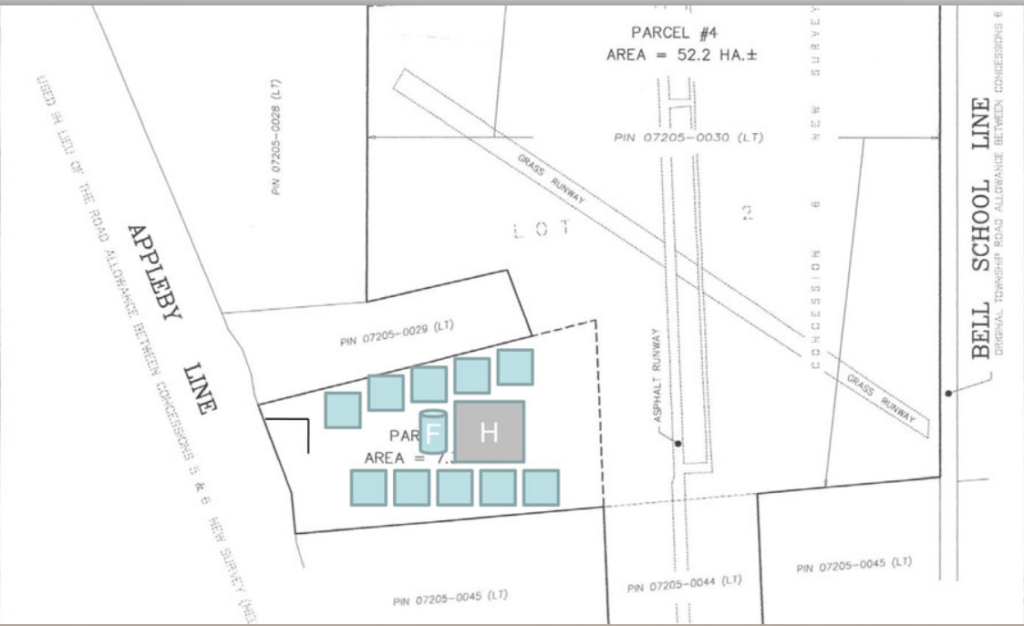
A drawing showing the location of what are believed to be helicopter landing pads less than 25 yards from a residents drive way on Appleby Line.
Transport Canada recognizes that there are some circumstances in which these Regulations should not apply. The following exceptions are therefore provided: Heliports and aerodromes primarily used for helicopter operations;
This exception will put the willys into Barbara Sheldon who has property cheek by jowl to the air park; there were plans to located a helicopter facility beside her front yard.
Through its principal means of reaching out to industry — the Canadian Aviation Regulation Advisory Council (CARAC) Web site and by way of email to 525 stakeholders — Transport Canada shared a preliminary assessment document to determine how best to proceed with the creation of the proposed Regulations. Based on the significant feedback received from stakeholders, a focus group was established. The primary purpose of the aerodrome focus group was to discuss the regulatory proposal that would require an aerodrome proponent or operator to notify affected stakeholders prior to undertaking prescribed aerodrome work.
Transport Canada held a number of focus group meetings; June 2014 to have a policy-level discussion on the regulatory proposal and February 15thl.
One of the concerns was about the subjective nature of the wording, including the lack of definition of certain terms, such as “reasonable” and “acceptable.”
The association groups and the municipal governments highlighted an issue with the definition of an “ad hoc aerodrome,” stating that there is no outlined responsibility for tracking the 30-day period, which would cause issues with enforcement. Individual organizational comments are highlighted below.
Municipalities want to be included in the consultation process even if the aerodrome is proposed in a neighbouring non-built up area, i.e. they want the radius to be increased.
They felt the duration of the consultation process was too short; Transport Canada should require land owners adjacent to aerodromes to consult with operators before any new land use activity commences to assess the impact on aviation safety and aerodrome operations.
A second focus group meeting was held at the end of March 2015 to modify the proposed Regulations in response to industry concerns regarding the scope, applicability and prescriptive nature of the requirements. Transport Canada addressed these concerns by clarifying the intention of the proposed Regulations and working with focus group participants to make changes to the scope, applicability and prescriptive nature of the NPA. For example, the kinds of developments or changes at existing aerodromes that would trigger the notification process were defined and the requirement to have a community meeting as part of the process were dropped, since it was felt that the result of sharing information and soliciting feedback could be achieved without it. To address the concerns raised by provincial officials and Canadians relating to aerodrome work in or near protected areas, the requirement to notify nearby federally protected area authorities was added.
The majority of the annual aerodrome work will be undertaken at smaller aerodromes, not at the major international airports. Of the 13 major international airports in Canada, only 3 have planned future development expected to take place over the next 15 years.
For proponents of aerodrome work at smaller certified airports or registered aerodromes outside of 4 000 m of a built up area of a city or town, the c
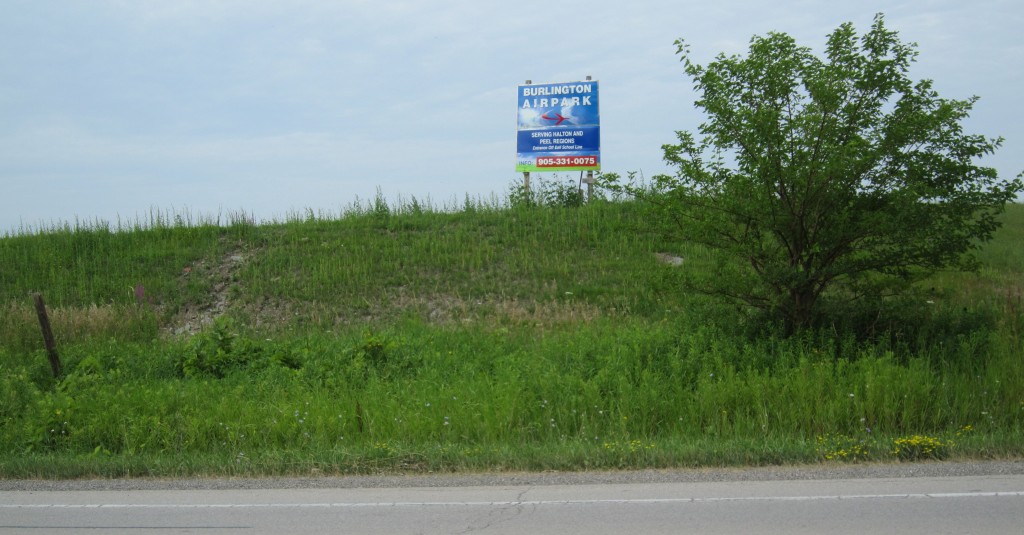
The Air Park has yet to file a site plan with the city of Burlington which would suggest that anything they want to build going forward would have to be discussed with the city and the property owners close to the air park. A sign indicating work was planned would have to be erected on this location, among others.
These amendments will be enforced through the assessment of monetary penalties imposed under the Aeronautics Act, which carry a maximum fine of $5,000 for individuals and $25,000 for corporations, through suspension or cancellation of a Canadian aviation document, or through judicial action introduced by way of summary conviction.
Interested persons may make representations with respect to the proposed Regulations to the Minister of Transport within 30 days. The regulations were published July 11 which gives people until August 11th to comment. All representations must be in writing and cite the Canada Gazette, Part I, and the date of publication of this notice and be sent to Marie-Anne Dromaguet, Chief, Regulatory Affairs (AARBH), Civil Aviation, Safety and Security Group, Department of Transport, Place de Ville, Tower C, 330 Sparks Street, Ottawa, Ontario K1A 0N5 (general inquiries – tel.: 613-993-7284 or 1-800-305-2059; fax: 613-990-1198; Internet address: https://www.tc.gc.ca).


















